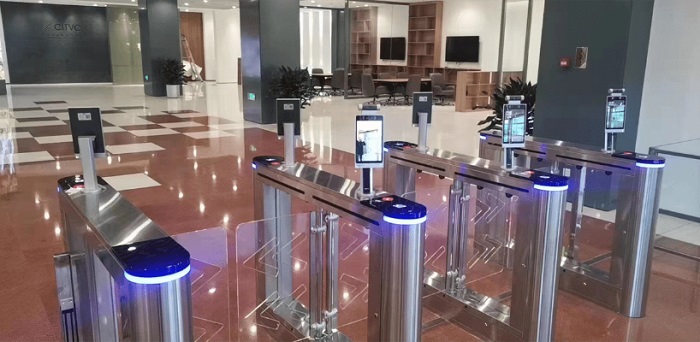Traditional Security Gates: Which is Right for Your Facility?

When it comes to securing entry points in a facility, there are various options available, including access turnstiles and traditional security gates. Each option has its own set of features and advantages. This article aims to explore the differences between access turnstiles and traditional security gates, Traditional Security Gate helping facility managers determine which option is best suited for their specific needs and requirements.
1. Efficient Flow Management: Turnstiles for High-Traffic Areas
Access turnstiles are known for their ability to facilitate efficient flow management in high-traffic areas. With their compact design and automated mechanisms, turnstiles can process individuals quickly, These gates typically consist of solid barriers or heavy-duty doors that require individuals to go through them one at a time minimizing wait times and preventing congestion. This makes turnstiles ideal for facilities with a large number of people needing to access entry points simultaneously, such as airports, stadiums, or transportation hubs. The streamlined entry process offered by turnstiles ensures a smooth and orderly flow of individuals, improving overall efficiency.
2. Controlled and Secure Access: Traditional Gates
Traditional security gates, on the other hand, provide a stronger physical barrier, offering a higher level of controlled access and security. These gates typically consist of solid barriers or heavy-duty doors that require individuals to go through them one at a time. This controlled entry mechanism Traditional Security Gate prevents tailgating or unauthorized individuals from gaining access. Traditional gates are commonly used in facilities that require strict security measures, such as military installations, data centers, or government buildings.
3. Integration with Security Technologies: Turnstiles for Enhanced Security
Access turnstiles can be easily integrated with various security technologies to enhance the overall security of a facility. For example, turnstiles can be equipped with RFID card readers, biometric scanners, or access control systems, ensuring that only authorized individuals are granted entry. By combining turnstiles with these technologies, facility managers can create a robust security ecosystem that effectively verifies and authenticates individuals before granting access. This integration is particularly important in facilities where security is a top priority, such as corporate offices, research facilities, or hospitals.
4. Customization and Aesthetics: Traditional Gates for Versatility
Traditional security gates offer more flexibility in terms of customization and aesthetic options. These gates can be designed to match the architectural style or branding of the facility, providing a seamless integration with the overall aesthetics. Traditional gates can be made from a wide range of materials, such as steel, aluminum, or glass, allowing facility managers to choose an option that suits their specific needs and preferences. The versatility in design makes traditional gates suitable for facilities where aesthetics are important, such as luxury hotels, shopping malls, or high-end residential complexes.
5. Emergency Egress and Safety: Considerations for Both Options
Both access turnstiles and traditional security gates should be equipped with emergency egress mechanisms to ensure the safety of individuals during critical situations. Turnstiles can be designed to release and allow free flow of individuals during evacuations, enabling swift and organized egress. Traditional security gates can also be equipped with panic bars or emergency unlock systems to provide a quick exit during emergencies. Facility managers must consider the emergency egress features of both options and ensure compliance with safety regulations to prioritize the well-being of individuals within the facility.
6. Cost and Maintenance: Factors to Consider
When choosing between access turnstile and traditional security gates, cost and maintenance considerations are important. Access turnstiles tend to be more cost-effective, requiring less space Traditional Security Gate and fewer materials than traditional gates. Additionally, turnstiles generally have lower maintenance requirements, with fewer moving parts and simpler mechanisms. Traditional security gates may have higher upfront costs and may require more regular maintenance due to their larger size and complexity. Facility managers should consider their budgetary constraints and long-term maintenance plans when selecting the appropriate option for their facility.
Conclusion:
Determining whether access turnstile or traditional security gates are right for a facility depends on several factors. Facility managers should consider the flow of individuals, level of security required, integration capabilities with security technologies, customization options, emergency egress features, and budget considerations. Access turnstiles are preferred for high-traffic areas that require efficient turnstiles generally have lower maintenance requirements, with fewer moving parts and simpler mechanisms. Traditional security gates may have higher upfront costs and may require more regular maintenance due to their larger size and complexity. flow management, while traditional security gates offer stronger physical barriers and versatility in design. By carefully evaluating these factors, facility managers can make an informed decision and select the option that best aligns with their facility needs and requirements.
